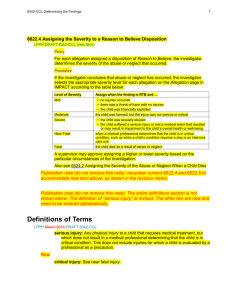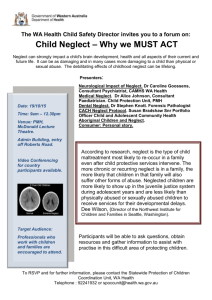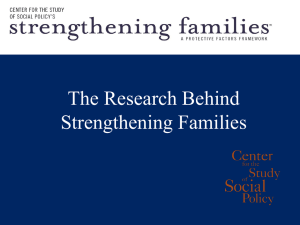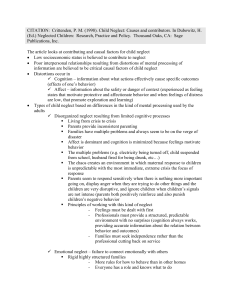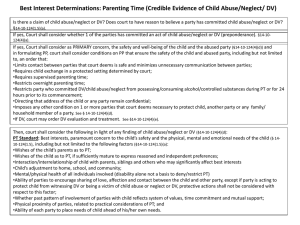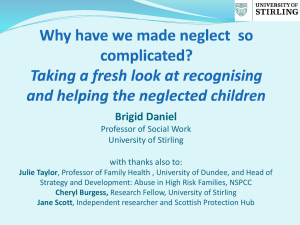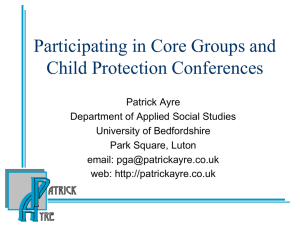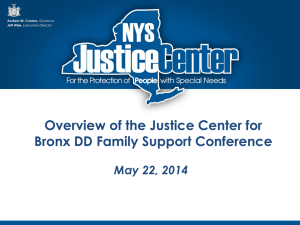detection of child abuse
advertisement
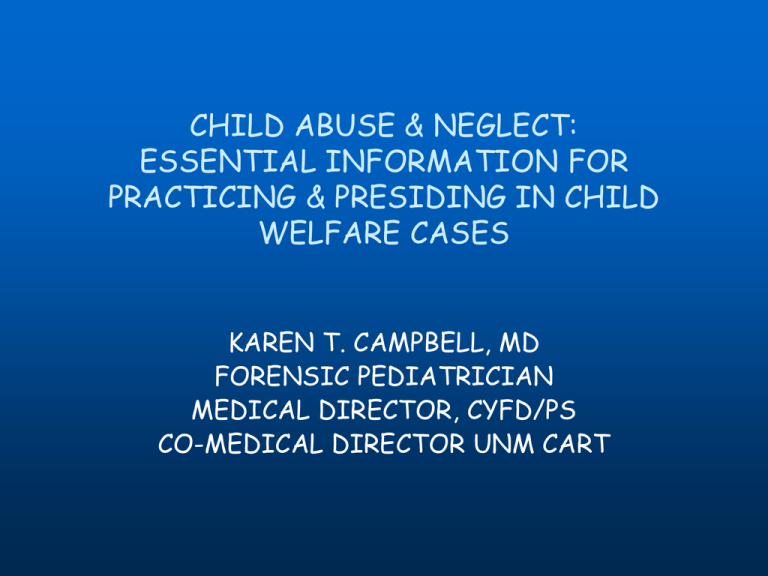
CHILD ABUSE & NEGLECT: ESSENTIAL INFORMATION FOR PRACTICING & PRESIDING IN CHILD WELFARE CASES KAREN T. CAMPBELL, MD FORENSIC PEDIATRICIAN MEDICAL DIRECTOR, CYFD/PS CO-MEDICAL DIRECTOR UNM CART Incidence and Prevalence There were approximately a million victims of Child Maltreatment in 2005 in the United States. The rate of victimization in the United States is 12.1 children per 1000 children. Further breakdown of statistics… In the United States• 54 % of the children suffered from neglect • 23% were physically abused • 12% were sexually abused. • Highest victimization rates were in the 0-3 year age group. In New Mexico The child population in New Mexico was 489,482 in 2005 32,950 children were the subject of a report for abuse/neglect in 2005 During the same year the rate of substantiation was 14.9 per 1000 children 12 children died as a result of abuse/neglect during 2005 Remember, every day in America, four (4) children die as a result of abuse and neglect! INJURIES IN CHILD ABUSE Examples of External Injuries Contusions Abrasions Lacerations Incisions Thermal/Chemical/Scald Burns Examples of Internal Injuries Fractures Contusion Laceration Incision Ischemia Edema Hemorrhage Common sites of Accidental Injuries Forehead Forearms Elbows Spinal Prominences Hips / Iliac Crest Knees Shins Common sites of NonAccidental Injuries Face Ears Neck Upper Arms Back Chest and Abdomen Upper legs Buttocks Genitalia Differentiating between Accidental and Non-Accidental Trauma Age and/or developmental capability of the child Parent/Caretaker explanation for how the injury occurred Type of Injury Location of Injury Risk Factors• Infant/Child and Parent/Caretaker Child Abuse Work-up History Complete Physical Exam Skeletal Survey Head CT Scan Bone Scan MRI/MRA of the Head and Neck Ophthalmology Exam Chest/Abdominal CT Scan Laboratory Studies Genetics/Dysmorphology Consult ABUSIVE HEAD INJURY NORMAL RETINA Corner Metaphyseal Fracture FRACTURES PATTERNED INJURIES BURNS CONDITIONS MISTAKEN FOR CHILD ABUSE CHILD NEGLECT DEFINITION OF NEGLECT: Historically, neglect has been difficult to define Definitions have varied across states, disciplines, agencies, and individuals Broadly stated, neglect is a condition where a child’s basic needs are not being met by their parent(s) or caretaker(s) TYPES OF NEGLECT: Physical Neglect • • • • Inadequate food and housing Adult substance abuse Domestic violence Failure to Thrive (FTT) Educational Neglect • Truancy and school absences • Non-approved home schooling Emotional Neglect Medical Neglect • Lack of appropriate Well Child Care and immunizations • Lack of appropriate medical care for acute and chronic medical conditions FAILURE TO THRIVE (FTT) Growth failure from malnutrition Drop of 2 or more standard deviations on a standard growth chart Weight at less than the 3rd percentile Can be “organic” or “non-organic” Can be a combination of “organic” and “nonorganic” RISK FACTORS IN FAILURE TO THRIVE Medical • Chronic medical conditions Illnesses, inborn errors of metabolism, heart disorders, pulmonary disorders, kidney disorders, genetic disorders • Congenital anomalies Poverty Parent-child interactive disorders Family dysfunction Parental mental health disorders Parental characteristics Child characteristics WORK-UP FOR FAILURE TO THRIVE Complete history • Birth history, maternal prenatal history, past medical history of the child, family history, feeding history, feeding behaviors Medical work-up as indicated by complete history If no “organic” etiology is indicated by history, placing the child in the hospital, or other environment, and following the child’s weight on an age-appropriate diet For further information or questions, please feel free to contact me at: (505) 841-7755 office (505) 540-9577 pager
